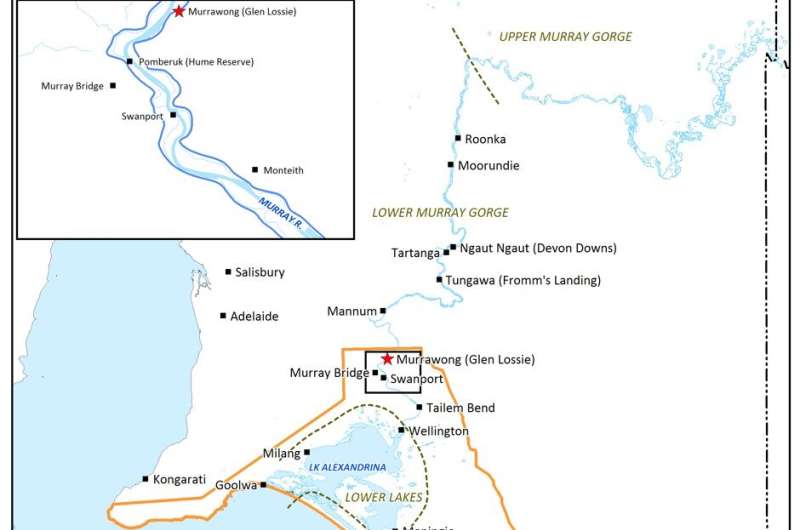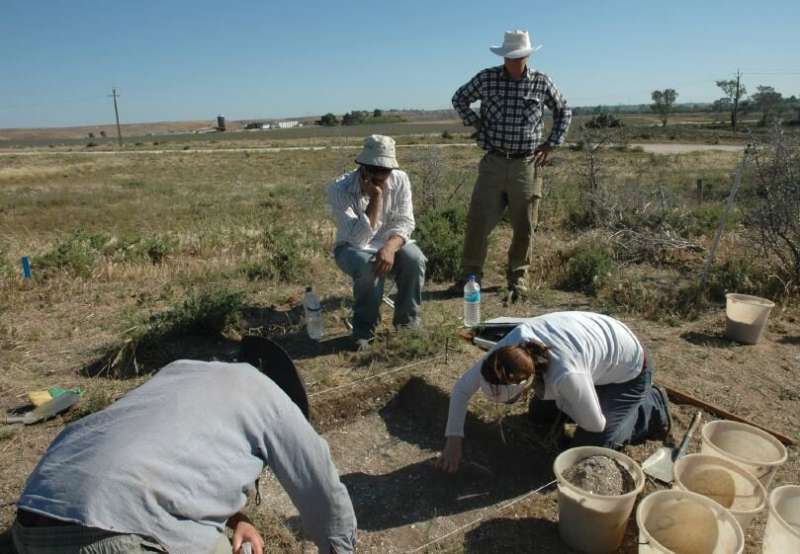Map showing the location of Murrawong in the Lower Murray River Gorge region of South Australia. Credit: Flinders University
The discovery of a rare bone artifact near the Lower Murray River casts more light on the rich archaeological record on Ngarrindjeri country in southern Australia.
Details of the Murrawong bone point, dated between c. 5,300-3,800 years old, has have been described by Flinders University, Griffith University and other experts in a new paper in Australian Archaeology.
Probably made from a macropod (kangaroo or wallaby) bone, the point was likely used for piercing soft materials—for example, used as a pin on a cloak made of possum furs—or possibly as a projectile point, say the research leaders Dr. Christopher Wilson and Professor Amy Roberts from Flinders University Archaeology.
While stone artifacts and shell middens are commonly found on the surface, bone objects are mostly uncovered during excavations. The last similar one was uncovered in the Lower Murray River Gorge was in the 1970s.
Dr. Wilson, a Ngarrindjeri man, says that "even one find of this kind provides us with opportunities to understand the use of bone technologies in the region and how such artifacts were adapted to a riverine environment."
-
(a) The Murrawong bone point; (b) superior view; (c) inferior view; and (d) distal edge featuring userelateddamage. Credit: Flinders University
-
Archaeology dig at the Murrawong excavation (2008). From left to right: Duncan Wright, Christopher Wilson, Roger Luebbers and Kelly Wiltshire. Credit: Flinders University
"Bone artifacts have lacked the same amount of study in comparison to artifacts made of stone, so every discovery reminds us of the diverse material culture used by Aboriginal peoples in this country," adds Professor Roberts.
The artifact was found during recent excavation work. The project was undertaken in collaboration with the Ngarrindjeri community.
More information: C. Wilson et al, Analysis and contextualisation of a Holocene bone point from Murrawong (Glen Lossie), Lower Murray River Gorge, South Australia, (2021), Australian Archaeology, DOI: 10.1080/03122417.2021.1886893
Provided by Flinders University


























